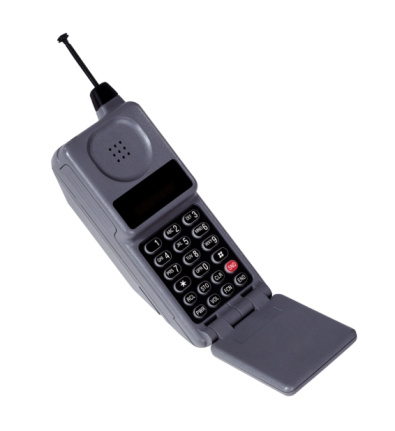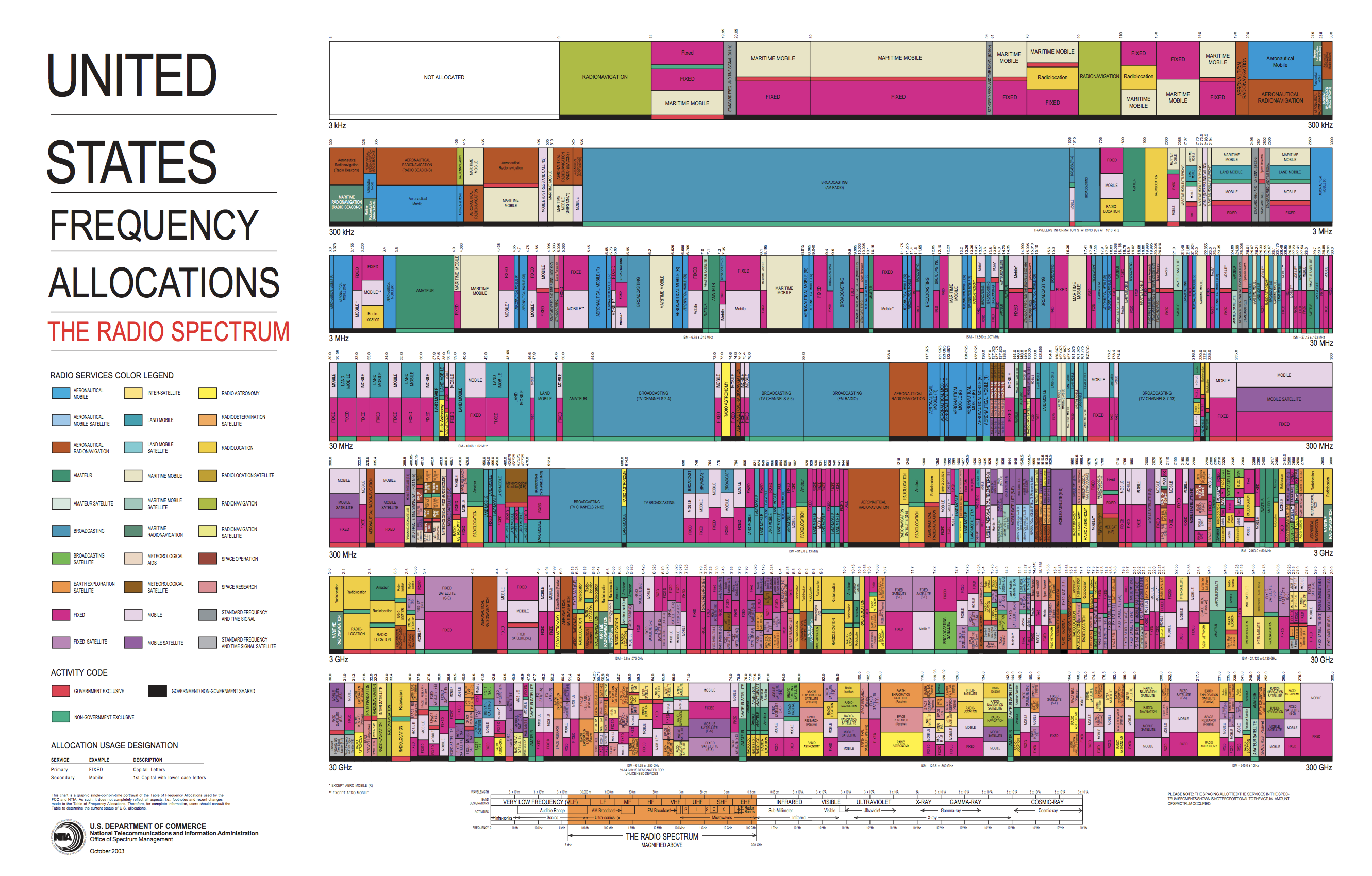
Whenever I take the red line train from Silver Spring, MD to downtown Washington, D.C., I look out the window of the train and stare at this strange structure:

Clocking in at 761 ft, the Hughes Memorial Tower is the tallest structure in the Baltimore-Washington Metropolitan area, towering over even the Washington monument by over 200ft. And every time I pass this humongous radio (and until 2017, television) tower, one thing pops into my head: “Man, I really need to finally figure out how cellphone towers work. I’ve really been meaning to do that for years. I should finally do that.” So here we are.
Although it probably features a cell site on it somewhere, The Hughes Memorial Tower is much more than a cell site. We’ve been transmitting signals through the air for a long time. (The design for the Hughes Memorial Tower was based on a similar-looking radio tower constructed for the Navy in the 1930s.) And for most of the history of airwaves, the technology used to transmit them were giant towers in the middle of cities. You might recognize some of these. Huge radio and television towers have been prominent (and even famous) parts of city skylines for most of the 20th century. To transmit television and radio signals far and wide, these structures needed to be tall and large enough to house all of the equipment needed to power massive antennas. Depending on the power of the antenna, signal from a single radio tower could travel hundreds of miles.
With the introduction of mobile telephones in the 1980s, however, a new kind of technological infrastructure found its way to the mainstream: cellular networking. Before reading anything else, I want you to ask yourself this simple question: “Why do we call the devices in our pockets cellphones?” It occurred to me as I began researching this topic that I had never even considered this question before. The answer seemed obvious at first: “Well, because they connect to cell towers, which… Oh, wait a second… why are those called cell towers…” I think I eventually landed upon something having to do with the battery cells? Well, as it turns out, this is why:

See how all of the smaller transmitter towers on right cluster together to make a larger coverage area? The smaller coverage areas have traditionally been drawn as a hexagon (for reasons we’ll get into later), causing them to look like little cells—like in a beehive. But why did this infrastructure develop in the first place? If having one giant tower in the center of the city was good enough to transmit radio and even television to millions of people, why did things need to change with the advent of mobile phones? To answer this, I’ll have to explain a little bit about radio communication and give some history of the development of mobile phone technology, but it all boils down to one thing: frequency limitations.
Simplex and Duplex Communication
Traditional radio and television broadcast towers were pretty simple: information only flows in one direction across the airwaves. A radio station could broadcast on a particular frequency, say, 101.3 MHz, and as long as you have a device that is within range of that transmission, you can tune in to that frequency and listen to that station. From a technical perspective, it doesn’t matter how many people are listening to the station at once. In order to prevent interference, you just have to make sure that there isn’t another radio antenna broadcasting on that same frequency nearby, but a system of licensing and regulation takes care of that. This one-way flow of information is called simplex communication, presumably because of how simple it is. One (high-powered) antenna broadcasts, and an unlimited number of devices can listen and receive the signal.
Ok, now I want you to think about Walkie-Talkies, I’m sure you’ve used them before. In order to communicate with another walkie-talkie, both devices have to be set to the same channel. Remember setting your device to channel 7 and then having to tell your friend to put their device on the same channel so that you could talk? This “channel” is actually a radio frequency that both devices need to be tuned to in order to communicate. Now, walkie-talkies were designed to use radio frequencies on a completely different part of the spectrum than radio stations, so there was no chance of interference. Notably, walkie-talkies use only one frequency to communicate. Each device broadcasts and listens on the same frequency. This is why you can only either talk or listen at the same time when using a walkie-talkie, and why you must say “over,” to let the other person know that you are done transmitting and that they may begin. Since there is only one pipe of information going between the devices, in order to avoid interference, signal can only be going one way at a time. This is another example of simplex communication. Each walkie-talkie takes turns either broadcasting or listening, but there still only needs to be one radio frequency involved.
Mobile phones were designed to work a little differently. Because cellphones need to be able to broadcast AND listen at the same time, they use a duplex communication system, meaning that information can be sent both ways simultaneously. This is accomplished by using two separate frequencies, one for the microphone to broadcast information to an antenna somewhere and one for the antenna to broadcast information to the phone speaker. And because you don’t want just anybody to be able to listen-in or join your cellphone conversation, both of these frequencies needed to be kept private during the length of your phone call, meaning that nobody else should be able to use them.
This means that there is a limitation to the number of simultaneous mobile phone conversations communicating with one antenna. Just as a city could only have a certain number of radio stations, so too was the number of available mobile phone channels limited. But what were these limitations, exactly, and who regulated them?
Frequency Allocation
In the United States, the FCC is in charge of dividing up the radio frequency spectrum for different uses, both government and private. If you look at the following graphic, which shows the allocation of radio frequencies from 2003, you’ll see that it’s a fairly complex matter:

Anticipating the rise of mobile phone services, the FCC carved out a chunk of the radio frequency spectrum for use with mobile phones in 1981. For each economic region where the FCC foresaw mobile phone use, two carriers were awarded licenses to operate on the 824Mhz - 894Mhz radio frequency spectrum. In order to ensure that this new mobile phone network would be compatible with the existing wired-phone network, one of these initial carriers was always an already established traditional phone company. Because of technical limitations on how wide a frequency needed to be in order to assure call quality and to prevent interference, this essentially amounted to each carrier receiving around 800 radio frequencies for use with mobile phones. As a duplex communication system, however, each mobile phone needed two frequencies to communicate, meaning that each carrier really only had 400 or so “channels” with which to communicate with phones.
If there were one giant radio tower in the center of New York City used to communicate with mobile phones, then, only 400 people could use it at the same time before all of the channels would be filled. This system was actually used early on, and while this might have worked in 1984, it clearly wouldn’t be able to scale with the demand for this new mobile technology, so a new infrastructure was devised. Enter: Cellular networking.
Instead of placing one large, high-powered antenna in the middle of a city, a system of many smaller “cells” was devised. Because each cell featured its own antenna, this meant that frequencies could be re-used in different cells. As long as they were communicating with different towers, two phones on different sides of the city could simultaneously use a particular pair of frequencies, effectively removing the frequency allocation limitation faced by central antennas. Structures like the Hughes Memorial Tower could be replaced by structures like this one:

In a future post, I’ll discuss how these new “cell sites” actually connect to and exchange information with one another, as well as how cellular networking has changed since its inception. With newer technologies like 4G LTE and the forthcoming 5G, the pressures and limitations surrounding cellular networking have changed a lot, leading to further changes in technology and infrastructure. Following the same pattern as the shift from central radio towers to distributed cells, towers will continue to get smaller and more numerous as more and more devices connect to the network and transmit more and more data.
Sources:
- https://electronics.howstuffworks.com/cell-phone4.htm
- https://www.extremetech.com/extreme/158342-a-rare-look-inside-an-lte-cell-site-operated-by-sprint-in-san-francisco
- https://gizmodo.com/giz-explains-how-cell-towers-work-5177322